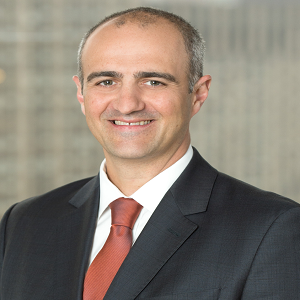"Investment companies must be diligent when determining executive compensation — it can ultimately be the difference between success and failure."
For decades, any conversation involving startups and executive compensation conjured images of Silicon Valley and shiny office buildings full of technology virtuosos working for innovative companies striving to be the next billion-dollar unicorn. Now, a new era of global startups is taking root in previously unexpected regions around the world.
In fact, recent research reveals that $893 million was invested in 366 startups throughout the Middle East and North Africa. That number represents a $214 million increase from 2017, which saw $679 million in startup investments.1
Similarly, startups are increasing in Southeast Asia, largely driven by "SEA turtles" — locally born residents who studied and worked overseas (mostly in the West, in places like Silicon Valley) and are returning home to launch their own startup companies. The region has experienced a major inflection point, with VC investors in Southeast Asia investing over $7.8 billion across 327 deals.2
There's one key component all these startups need, however: leadership. But attracting and retaining executive-level talent and management teams can be a major challenge for these burgeoning startup hotbeds, especially when it comes to compensation.
Corporate Investors Are Changing Executive Compensation
Many of the world's most recognizable startups were launched by charismatic, individual founding partners, such as Jeff Bezos, Jack Ma and Mark Zuckerberg. However, the rise of these luminaries and their compelling stories do not mirror the new era of startups blossoming around the world.
In the Middle East and North Africa (MENA), for example, investment companies are providing the initial financial backing needed to launch startups. These investment companies are there from day one to ensure the startups have the capital needed to secure subsequent rounds of funding. Additionally, the executives of these startups are not the original founders and, therefore, desire different compensation models to secure their continued loyalty, creativity and commitment.
Acquiring top C-level talent for startups can be a daunting task, as the risk level is high for businesses that do not have a proven track record — or any record at all. Traditionally, western-based startups have fashioned executive compensation packages around medium- to long-term benchmarks predicated on the company's expected growth, but triangulating growth models, investment strategies and executive payment packages can be a complicated and tenuous proposition.
Since most global startups today are built around investment companies instead of inspirational individual founders, these companies must be diligent when determining how or how much to pay the executives — who can ultimately mean the difference between success and failure.
How Much Should Executive Compensation Be?
Investment companies naturally want to maximize their profits, which means they want to retain as much equity in the startup and as many shares of the startup as possible. Every dollar, share of stock or option paid to startup executives is money the investment companies surrender to operational costs. However, low-balling startup executives or opting to hire those who aren't as skilled or experienced also comes with the risk of undermining the startup's ability to compete, grow and drive revenue.
Financial arrangements that provide management with a potential share of equity (or shadow equity) require careful thought and consideration. An executive compensation plan must act as an incentive and retention device for startup executives while delivering a fair return to investors and shareholders who have funded the company. Investors and shareholders must decide how much dilution of equity they are willing to accept to provide an appropriate equity pool for the management team.
This is why many companies decide to execute a scaled approach that decreases the size of the equity pool with each round of funding to accommodate the increasing value of the company. This type of program impacts the dilution of equity and can allow for more creative compensation strategies — particularly when dealing with more sophisticated startups, such as in the pharma and fintech industries, which require the talent and knowledge of more accomplished professionals and leaders.
Investment companies can offer either share options, which give employees the right to buy or sell stock at a designated time and price, or full-value shares, which offer employees actual ownership in the company. Both contribute to the dilution of equity, but options typically contribute more to the equity dilution than full shares. For example, an equity pool comprised of options may amount to 15% to 20% of a company's capital, while a pool comprised of shares may amount to as little as 3% to 5%. This indicates the same amount of long-term incentive awards paid in options will lead to higher equity dilution than awarding full shares. Investment companies must determine which strategy best suits their objectives.
When to Pay Executives and Management
Should investors pay their executives and management teams only after they have received a return on their investments? Or should executive compensation be based on employees performing their jobs to the best of their abilities, regardless of the outcomes — which are often determined by external economic forces beyond their control.
Many startups now implement the former strategy, believing that benchmarks for returns on investments motivate executives and provide them with the extra incentive to do everything possible to create shareholder value. In fact, in a majority of cases, long-term incentive plans only pay out when investors receive a return. Alternately, some startups choose to compensate executives and management based on specific, mutually agreed upon corporate goals and objectives. Compensation can then be provided as cash or shares, though there may be restrictions on when those shares can be sold or vested or whether they come in the form of options or full-value shares.
Startups are popping up all over the world, ushering in a new frontier of ideas and innovation, as well as investors and executives who will create the next generation of future unicorns. As new trends continue to emerge for how executives in these startups are compensated, global startups will need to review their options with scrutiny to attract the best executive talent while maximizing returns for investors.
Sources:
1. "2018 MENA Venture Investment Summary." MAGNiTT, January 2019,https://magnitt.com/research/2018-mena-venture-investment-summary.
2. Maulia, Erwida. "Southeast Asian 'turtles' return home to hatch tech startups." Nikkei Asian Review, 22 May 2019,https://asia.nikkei.com/Spotlight/Cover-Story/Southeast-Asian-turtles-return-home-to-hatch-tech-startups.










